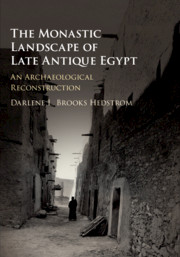Book contents
- The Monastic Landscape of Late Antique Egypt
- Frontispiece
- The Monastic Landscape of Late Antique Egypt
- Copyright page
- Dedication
- Contents
- Figures
- Preface
- Acknowledgments
- Notes on the Text
- Abbreviations
- Introduction
- one Monastic Archaeology in the Nineteenth and Early Twentieth Centuries
- two Archaeology and Twentieth-Century Perceptions of the Monastic Landscape
- Three An Ecohistory and Geohistory of the Egyptian Landscape
- Four Late Antique Documentary Evidence and the Monastic Landscape
- Five Telling Stories about the Egyptian Monastic Landscape
- Six The Archaeology of Late Antique Buildings in Egypt
- Seven Looking at Egypt’s Monastic Built Environments
- Conclusions
- Notes
- List of Illustrations: Credits and Information
- References
- Index
- References
References
Published online by Cambridge University Press: 11 November 2017
- The Monastic Landscape of Late Antique Egypt
- Frontispiece
- The Monastic Landscape of Late Antique Egypt
- Copyright page
- Dedication
- Contents
- Figures
- Preface
- Acknowledgments
- Notes on the Text
- Abbreviations
- Introduction
- one Monastic Archaeology in the Nineteenth and Early Twentieth Centuries
- two Archaeology and Twentieth-Century Perceptions of the Monastic Landscape
- Three An Ecohistory and Geohistory of the Egyptian Landscape
- Four Late Antique Documentary Evidence and the Monastic Landscape
- Five Telling Stories about the Egyptian Monastic Landscape
- Six The Archaeology of Late Antique Buildings in Egypt
- Seven Looking at Egypt’s Monastic Built Environments
- Conclusions
- Notes
- List of Illustrations: Credits and Information
- References
- Index
- References
- Type
- Chapter
- Information
- The Monastic Landscape of Late Antique EgyptAn Archaeological Reconstruction, pp. 359 - 412Publisher: Cambridge University PressPrint publication year: 2017



